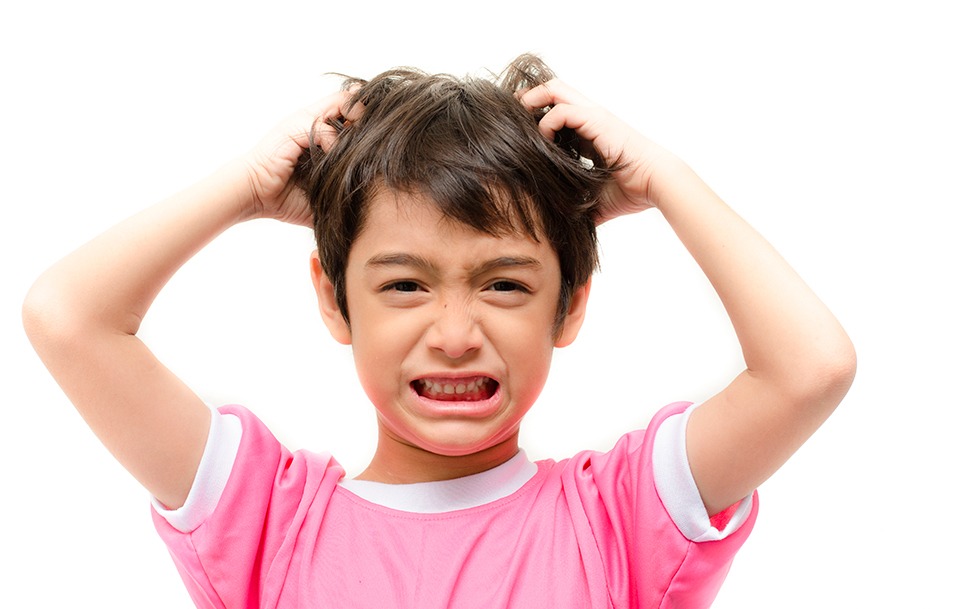Lice
The lice or Pediculus humanus capitis are parasites that mainly inhabit the head, although sometimes also can be found in the eyebrows and the eyelashes. They feed on human blood.
Their life cycle lasts about 30 days in the head, on the contrary they do not survive more than 24/48 hours without a human host. The phases are:
- Nits: they are the eggs of lice. They have an oval shape, of white color and are hooked to the scalp by a sticky substance that secrete. They take about 7-9 days to become nymphs.
- Nymph: immature lice. It feeds on human blood and it takes about 9-12 days to become an adult louse. Normally they are not the focus of contagion, since they don’t move to another head.
- Adult lice: they survive 30 days on the scalp. They are gray parasites with 6 legs. They don’t jump or swim. The infection is produced by direct contact head-to-head or through infected objects such as a brush or hat. Females are larger than males and are able to generate more than 200 eggs throughout their life.
Its spread begins with the contact of a person who is infected. It is common for school-age children to become contaminated more frequently by being in contact with each other for many hours. Another factor of infestation, is through objects of infected people, as for example the clothes, a comb or brush.
The most common symptom experienced by an infected person is intense and constant itching. Pruritus is due to an allergic reaction of our immune system to lice saliva. Scratching causes a reddening of the area. Finally, having a constant burning sensation causes irritability and moodiness.
When lice are identified, immediate action should be taken to avoid proliferation with anti-lice lotions and periodic and manual revision to ensure that no lice or nits remain.

